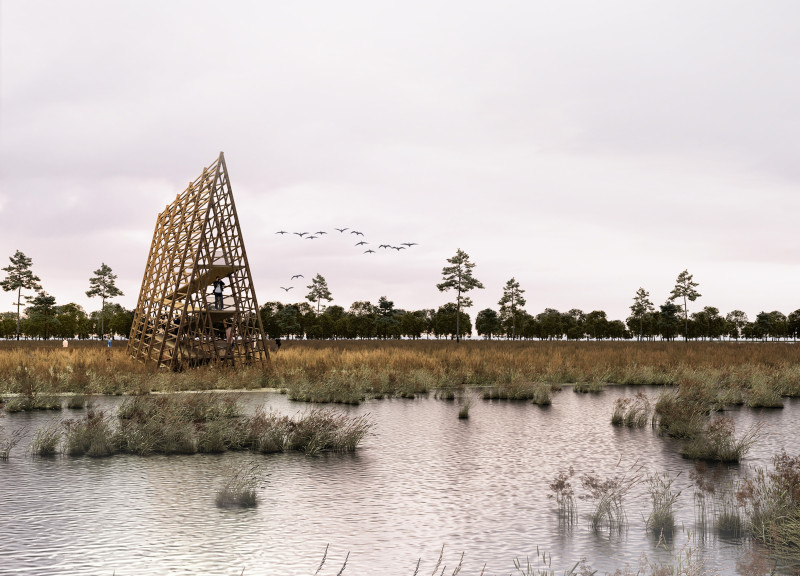5 key facts about this project
The architectural design emerges within the Great Kemeri National Park, prioritizing the enhancement of visitor experiences through a thoughtfully conceived structure. At the heart of the design is the concept called "Tria," which reflects traditional forms and embraces cultural environmental values. The aim is to promote interaction between visitors and the natural landscape, using forms and arrangements that invite exploration and observation.
Design Concept
The structure features timber facades that allow visitors to discover their own observation points without obstruction. This design choice encourages active engagement with the surroundings. The main tower comprises six observation and landing platforms, providing varied views of the park's landscape. The semi-closed shell design allows visitors to observe the scenery from different angles as they navigate the ramps, enriching their sensory experience.
Boardwalk Integration
A key aspect of the design is the footbridge that guides visitors into the park. The boardwalk serves as an essential path, leading to various natural environments, including meadows and marshes. It also facilitates encounters with migrating birds. This pathway supports a direct connection with the environment, encouraging visitors to immerse themselves in the beauty around them.
Modular Flexibility
The design adopts a modular approach, allowing for flexible arrangements that create observation and resting points tailored to visitors' needs. Two flat areas for rest and observation blend into the ramps, ensuring comfort and accessibility. This careful planning underscores the importance of usability, enhancing the overall visitor experience.
Material Considerations
Material choices play an important role in this design. The use of powder coated galvanized steel, timber flooring, wood panels, helical piles, separators, and stringers helps ensure durability and safety. Each material is selected to promote integration with the natural context while providing long-lasting functionality.
The result is a structure designed to encourage exploration. Observation points are positioned thoughtfully, allowing visitors to connect with the landscape and appreciate the details of their environment.
























